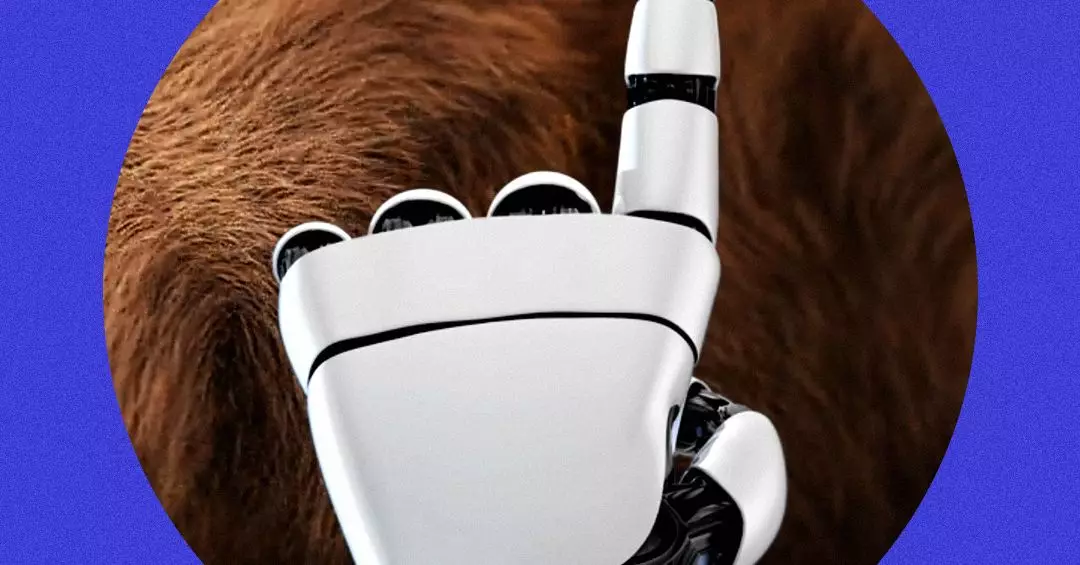In a groundbreaking stride toward revolutionizing the world of logistics, Amazon has unveiled its latest creation: Vulcan, a sophisticated warehouse robot that employs touch sensitivity to navigate the complexities of product retrieval within shelves. This innovation not only showcases Amazon’s commitment to enhancing efficiency but also signals the dawn of a more tactile interaction between robots and their environments. As the demand for quicker and more accurate fulfillment grows, Vulcan stands as a testament to the possibilities that advanced robotics can bring to the supply chain sector.
Bridging the Gap Between Human and Machine
At the forefront of this initiative is Aaron Parness, Amazon’s director of robotics AI, who spearheaded the development of Vulcan. The design of the robot is particularly intriguing, equipped with a custom spatula-like appendage and suction mechanisms to facilitate its task. Unlike traditional robots that may struggle with item identification and placement, Vulcan’s touch-sensing capabilities enable it to manipulate products on shelves delicately. Parness notes, “To effectively stow or retrieve items, making physical contact with surrounding products is essential.” It is this need for tactile interaction that Vulcan addresses, allowing it to sift through bins of varying products efficiently.
This touch-centric approach represents a significant departure from the conventional robotic methodologies that predominantly rely on vision. As Vulcan’s sensors sense edge contours and weight distributions, the robot can intelligently assess the best approach to retrieve an item. The marriage of machine learning with tactile sensing gives Vulcan an edge in fulfilling orders – literally and metaphorically.
Redefining Human-Robot Collaboration
Vulcan’s introduction marks a new era in human-robot collaboration within Amazon’s fulfillment centers. While the robot is designed to alleviate the physical strain experienced by human workers, such as reaching for items stored at uncomfortable heights, it is programmed to hand over excessively complicated tasks to its human counterparts. This hybrid working model emphasizes that robots are not here to fully replace humans, as Parness asserts, “We don’t strive for 100 percent automation.” Instead, Vulcan can work alongside human pickers, enhancing their productivity and reducing the risk of injury from repetitive and strained movements.
Critics may argue that the introduction of such robots could lead to diminished job security for human workers. However, Parness and his team emphasize that the goal is to create a symbiotic relationship between human workers and robotic systems, whereby each party complements the other’s abilities. In this light, Vulcan is more than just a functional tool; it symbolizes a collaborative shift in the workplace.
Prioritizing Practical Challenges and Opportunities
Despite Vulcan’s impressive capabilities, it is worth acknowledging the practical challenges still faced by robotics in this domain. Ken Goldberg, a prominent roboticist at UC Berkeley, points out that while progress has been made in robotic touch sensing, achieving the finesse of human tactile perception remains a distant goal. The intricate complexity and sensitivity of human touch cannot be easily replicated, suggesting that while robots can certainly augment productivity, they may always fall short of fully mirroring human capabilities.
Automation in fulfillment centers has surged in recent years, with robots that can transport and stack items efficiently. However, the nuanced task of retrieving specific items from dense, cluttered storage shelves proves more formidable. Vulcan attempts to mitigate these challenges by employing sophisticated sensing technology, yet the question remains: to what extent can this technology replace human ability in the long term?
A Vision Beyond Fulfillment Centers
The implications of Vulcan’s technology extend beyond Amazon’s warehouses. The advancements in touch sensitivity and machine learning could pave the way for broader applications across various industries. From hospitals, where robots can assist in delicate surgical procedures, to agricultural sectors where sensors are crucial for assessing crop health, the potential for tactile robots is vast. Vulcan is not merely a step forward for Amazon; it represents a paradigm shift in how industries might integrate robotics into their operational frameworks.
By investing in such a transformative robot, Amazon isn’t just addressing current logistical challenges; it is laying the groundwork for a future where robotics and AI play ever-increasing roles in everyday life.

